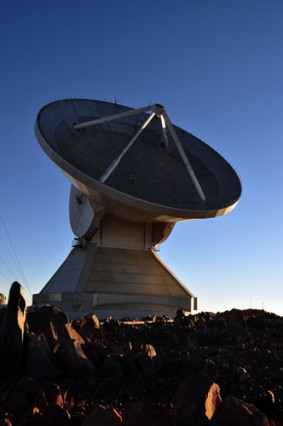VLBI-HSA
The LMT participates in 3 mm VLBI observations scheduled as part of the “High Sensitivity Array” (HSA). The HSA is a collaboration between the NRAO’s VLBA and the Green Bank Telescope, Effelsberg, Arecibo, the VLA and the LMT (although not all these telescopes can observe at 3mm).
- HSA proposals involving the LMT should be submitted using the NRAO web-based proposal submission tool at the advertised NRAO Calls for Proposal deadlines.
- HSA observations with the LMT are offered through NRAO’s RSRO program and VLBA RSRO should be selected as the resource in NRAO’s proposal submission tool.
- Sensitivities of observations including the LMT can be estimated using the GMVA calculator
- HSA observations will be correlated at the VLBA correlator in Socorro.
- The observing schedule should be made using the NRAO SCHED program, available from anonymous ftp at: ftp.aoc.nrao.edu.The SCHED manual can be found at: www.aoc.nrao.edu/software/sched/index.html.
- An example of a successful SCHED (.key & .vex) program including the LMT can be found below:
bd183c.key
bd183c.vex.
- For additional information please contact Dr. Jonathan León-Tavares (leon.tavares@inaoep.mx).
Technical Information
- HSA VLBI observations at 3 mm are conducted with the Redshift Search Receiver;
- Currently, the LMT as an HSA stantion can only support single polarization observations. Although the 3mm receiver includes a quarter-wave plate providing left and right circularly polarized (LCP and RCP respectively) outputs, only single polarization data can be properly recorded to ensure a straightforward correlation with data from other HSA stations.
- Frequency standard: Hydrogen maser (Symmetricom MHM2010);
- Currently, frequency switching is done manually. Therefore, projects that require automated frequency switching are not feasible with the LMT;
- Digital backend: modified ROACH Digital Backend (RDBE);
- Recorders: Mark5C;
- The LMT slew-speed between targets is 1 deg/sec in both azimuth and elevation;
- Observations are restricted to an elevation range of 20 to 85 deg.
- Typical system temperatures for 3mm-RSR observations are Tsys ~ 100K.
- Pointing observations (which take ~ 5min each) should be done every ~1hr, or whenever the antenna is moved to target a different positions on the sky.
- Focus measurements (which take ~ 15min) must be done every night before starting observations. It is recommended to repeat focus measurements after midnight.
